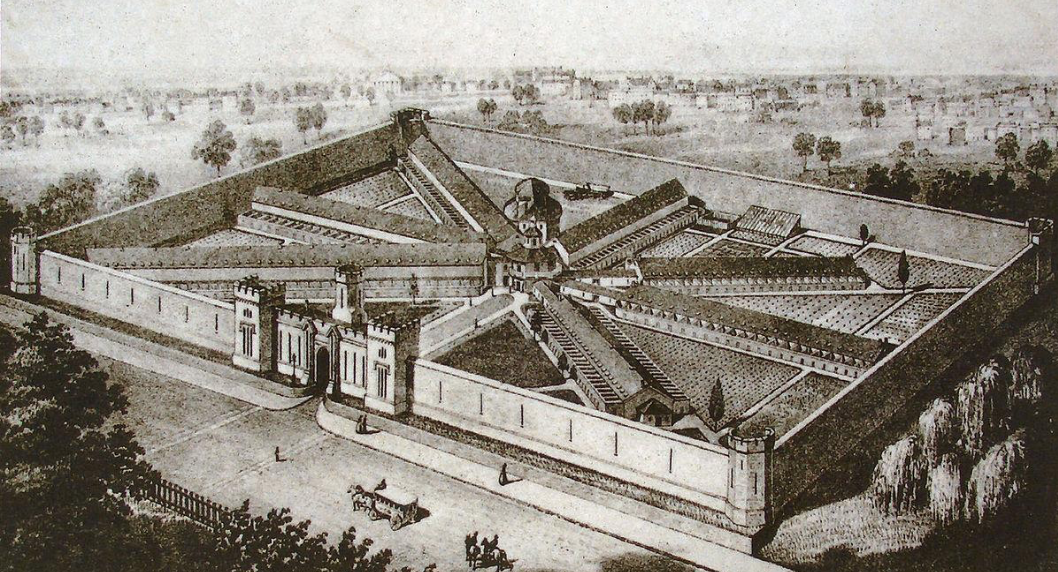7.8. Growth of Prisons in the United States
David Carter and Kate McLean
As mentioned at the beginning of this section, the Walnut Street Jail is recognized as the first publicly-built institution for incarceration in the United States. Soon after its construction, another prison was built with similarly lofty ideals – the Eastern State Penitentiary (ESP), which operated as a prison for nearly 150 years. Many of the prisons still in operation today were first built on the “Eastern State model” of a penitent prison, where inmates were held in solitary cells, required to be silent, and perform some kind of labor. Many of the cells in the original prison (asdepicted below) opened to individual courtyards where individuals could look up and meditate on a higher power – hence the concept of a penitentiary.

Individuals in the “ESP” all of their time alone, largely in their cells, reading the bible, praying, working on an individual trade or skill – and always silent. This solitude was meant as a way to serve penance. The “Eastern State” model strove to be rehabilitative, if not progressive; in fact, the society that advocated for and shaped both the Walnut Street Jail and Eastern State Penitentiary was named the “The Philadelphia Society for the Ameliorating the Misery of Public Prisons.” Yet, the penitentiary quickly earned a reputation for despair related to its universal practice of solitary confinement; it was also extraordinarily expensive to house inmates in individuals cells, with no room for prison growth. Around the same time as the ESP, another prison was built in, New York, in 1819 – the Auburn prison. This prison would become the model for a second major prison “style”, the “Auburn model”. Many of the facets of the ESP – an emphasis on silence and labor – were present in the Auburn, save one. Auburn utilized a congregate system, which meant that (still in silence) inmates would gather together perform labor, eat, “enjoy” recreation time, etc.
Ultimately, Auburn proved to be a far more cost-effective model of prison design; not only were inmates more easily housed in “cell-blocks,” with multiple prisoners per cell, but the goods they collaboratively produced yielded a significant profit for the prison. (In fact, it was estimated that the Auburn prison was “paying for itself” within 5 years.” For this reason, the congregate system took hold as the dominant model for many prisons, and many states began to model their prisons on the Auburn prison. Notably, Auburn was also the prison where the first death by electric chair was executed in 1890. Today, there are roughly 1,700 State or municipal prisons in the United States. As the images demonstrate, it is clear that many of the prisons in the U.S. have been built more recently.
Watch and reflect
The video linked below shows the proliferation of new prisons across the United States, from the 18th century to present. Watch it while asking:
-Which periods of time saw the heaviest constructions of prisons? What was happening during those periods?
-Which regions of the country appear to have the densest prison construction? And why?
-Is there any obvious relationship between prison construction and crime?
Legend: Green Dots = 1778-1900, Yellow Dots = 1901-1940, Orange Dots = 1941-1980, Red Dots = 1981-2005

